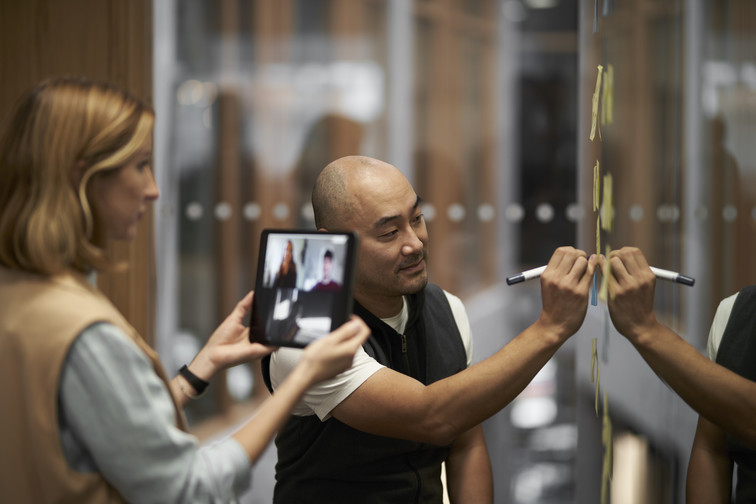Last week we locked the key roles in the Visma.net Platform team into a room and ran a Design Sprint to improve the role assignment in the Visma.net Admin UI.
Or well, due to the pandemic it was a virtual room. We ran the Design Sprint online and everyone was at their home office, but even so, everyone managed to clear out their calendars for four full days and we dedicated all of our energy, efforts and creativity into this!
Design sprint 2.0
We ran version 2.0 of the Design Sprint workshop, where we started on Monday with the challenge statement “How might we help Admins manage role assignment in an easy and intuitive way?”. We analysed and mapped different dimensions like customer needs, feedback we got from our customer touch points such as interviews and support, tried to identify the ideal solution and more.
I must confess that, at the end of that day, my energy level was quite low. We kept all of the discussions on an abstract level and I think everybody from the team was eager to start on something more concrete.
But then came Tuesday. The team discussions were never-ending and no results of common understanding or ideas were reached. Thankfully, our UX facilitators knew just what to do and “forced” us to work individually for a while instead, and present our ideas to each other and then vote together.
We did lightning demos (stealing ideas and inspiration from each other), Crazy8 (sketching), and speed critique. All of these exercises helped us converge on some ideas and we started to see preferences and common approaches.
We ended up with two winning solution sketches – one from our Software architect, Horia, who had focused on iterating and improving the existing Admin functionality, and one from our Domain expert, Erlend, who had focused on our Data Model and gone with a more wild and different approach.
Then Wednesday started off with the chosen solution (we decided to go wild on Erlend’s approach), creating a storyboard (like a scenario of a movie, screen by screen) and creating an interactive prototype in parallel.
The challenge was more or less to turn all of our ideas into one application screen, but because there are different flows and customer needs, it was quite difficult to create a storyboard. Luckily we had Marius & Laurentiu, our Front-end developers, who very quickly implemented the scenarios in Adobe XD. With regular check-ins, we tweaked and improved both the scenarios and the prototype.
An additional challenge that same day was for the facilitators to coach and to prepare a team who attended but never ran user interviews to get ready for the usability tests the next day. Our Agile Test Lead, Nicoleta, our Service Architect, Horia, and I, Mihai the Service Owner, took on the challenge to interview the customers.
On Thursday we had four user interviews with customers who were carefully chosen to match our users demographics: 2 Norwegians, 1 Dutch and 1 Swedish customer from 2 accounting offices and 2 large companies.
The users have been using the existing Admin functionality for a long time, but even with different approaches they were all proficient in the new prototype very quickly and all rated that as the way to go forward.
In the end I can conclude, on behalf of my team, that this Design Sprint exercise was a great success on multiple fronts:
- As a Service Owner, I’m happy that we found a better way to solve the customer needs in just 4 days, and managed to do everything from team brainstorming, to prototyping and validating with actual users
- As a Manager I’m happy with this design workshop – we lifted the individual thinking to team collaboration and we really pushed for innovation
- The team really appreciated this event as a remote team building
And last but not least I would like to thank our UX facilitators Susanna Lindkvist and Victoria Bondarchuk, who knew the framework and guided and coached the team running it. They were very good at structuring the “small kids playing and fighting for their ideas”.
In the end we were all exhausted, but very happy we now have a prototype and a solution to make our customers happy and more productive!

